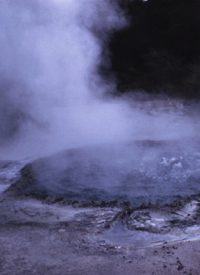
Klamath Falls, Oregon, uses geothermal power to meet many of the needs of the town. Hot rocks and geysers keep the sidewalks warm in winter, heat downtown buildings, light the college campus, and warm greenhouses. On the surface, it sounds like a perfect example of how geothermal power — and perhaps other green power sources — can power America.
But it was not any environmental concerns that moved Klamath Falls to use geothermal power. “We didn’t know that it was green. It just made sense” said City Manager Jeff Ball. The community sits in an area of America in which there is a great deal of readily accessible geothermal energy in the ground.
Men have always tended to access the cheapest, most abundant, and most accessible power sources. Iceland, for example, uses geothermal power for one-quarter of the nation’s energy needs and a larger share of heating needs. The decision to use geothermal power, however, dates back more than 250 years, when the first holes were drilled to draw up the natural heat that a land sitting atop volcanic activity provides. Eighty years ago, systems of geothermal power were developed to heat buildings in Iceland. Environmental or “green” technology had nothing to do with this use: Icelanders found geothermal energy cheap, available, and versatile.
Centuries earlier, the Dutch made dramatic use of wind power. Systems of windmills literally reclaimed significant areas of the Netherlands — polders, these areas were called — from the North Sea. Wind power was used all over Europe for a variety of other purposes. Why? Wind power was the most advanced technology available. Windmills, literally, transformed the physical map of Europe, especially in the polders of the low countries.
Water power was another cutting-edge technology around these times. Water mills dramatically increased the amount of power available for a variety of industrial purposes. As in the case of windmills, these water mills were anything but simple: Elaborate systems of gears, levers, and cogs — all powered by the highest technologists that the Middle Ages produced — made these dynamos effective.
Klamath Falls has found it economical and effective to use geothermal power to provide for much of the energy needs of the community. Every town ought to pursue the cheapest, safest energy sources it can — or, rather, allow private companies to pursue those sources. The danger is extrapolating geothermal use in a medium-sized town sitting astride geological stress lines to the energy needs of America generally.
Not every city is Reykjavik, Iceland (a city whose name means, literally, “Smoky Bay”), or Klamath Falls, Oregon. Windmills were common across the Great Plains not because of an ecological need, but rather because these mills were effective pump systems for scarce water (among other uses.) The human need, not the environmental interest, has guided the wise and varied use of different energy sources in human history.
Klamath Falls is no exception to that rule. The taxpayers, however, funded a great deal of the geothermal energy use in Klamath Fallls.



